Decoding Alchemy Symbols
The Mystical Meanings of Alchemical Symbols
In the labyrinthine corridors of history, where civilizations have woven enigmatic tapestries of knowledge and mysticism, one finds the enduring presence of alchemical symbols.
These intricate emblems, steeped in esoteric lore and arcane wisdom, have silently whispered their secrets to the curious souls who dare to decode their cryptic messages.
From ancient Egypt to medieval Europe and beyond, the enigmatic world of alchemical symbols has transcended time and culture, leaving behind a trail of intrigue that continues to captivate seekers of wisdom and truth.
Alchemy Symbols and Meanings
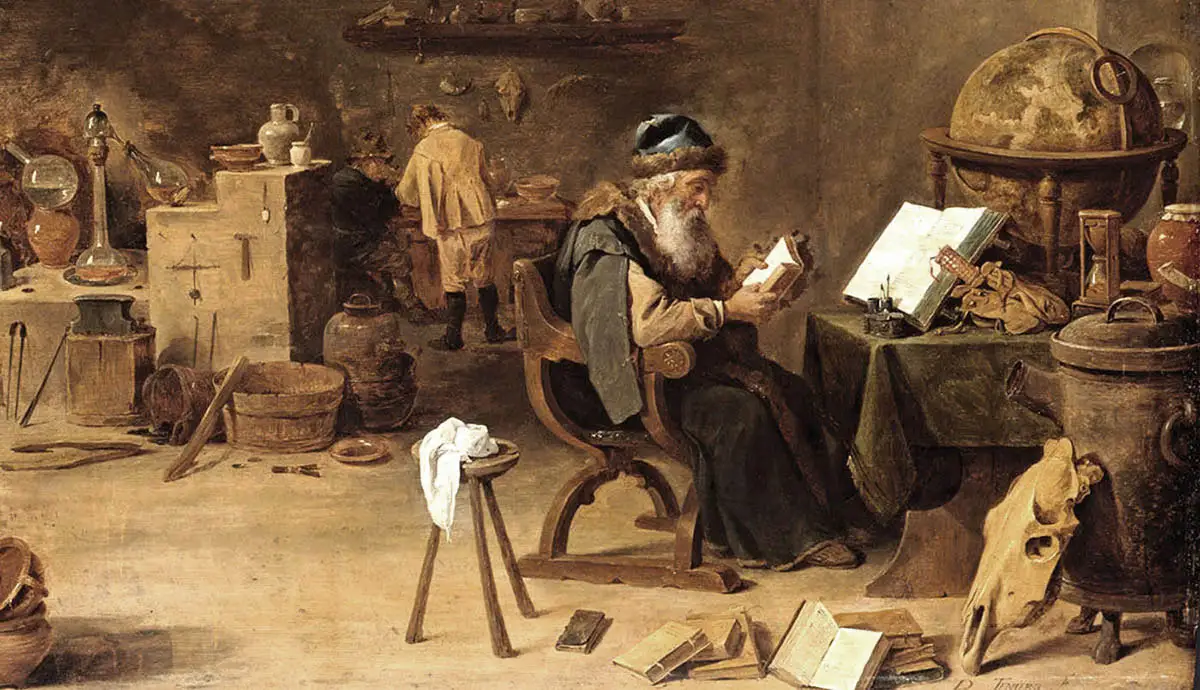

Within the realm of alchemy lies a potent fusion of science, spirituality, and symbolism—a concoction brewed with mystical intent and philosophical depth.
The glyphs and sigils that adorn alchemical manuscripts serve as keys to unlock hidden chambers of understanding, revealing profound insights into the nature of existence and transformation.
As we embark on a journey through the annals of time, delving into the origins and evolution of these symbols across diverse cultures, we uncover a rich tapestry woven with threads of mystery and meaning.
Join us as we unravel the enigmatic world of alchemical symbols—a universe where matter merges with spirit, lead transmutes into gold, and timeless truths await those who seek to decipher their ancient language.
Step into the alchemist’s laboratory of knowledge and prepare to be mesmerized by the symphony of symbolism that echoes through the ages.
Historical Reference
The enigmatic world of alchemical symbols finds its roots entwined deeply in the annals of ancient civilizations, where mysticism and symbolism were revered aspects of daily life.
Ancient cultures such as the Egyptians, Greeks, Chinese, and Indians laid the foundation for what would later become the intricate tapestry of alchemy.
These civilizations imbued their symbols with profound meanings that reflected their beliefs in transformation, renewal, and spiritual enlightenment.
As history unfolded, alchemical symbols underwent a metamorphosis, adapting to different cultural contexts while retaining their core significance.
The evolution of these symbols mirrored the changes in societal beliefs and philosophical ideologies over time.
For instance, the symbol of the Ouroboros, a serpent or dragon eating its tail, symbolizing eternity and cyclicality, has been depicted across various cultures like Egyptian mythology and Norse cosmology with nuanced interpretations reflecting each civilization’s unique perspectives on existence and rebirth.
Delving into the esoteric meanings behind common alchemical symbols unveils a world shrouded in allegory and metaphor.
The image of the Caduceus, often associated with healing and balance due to its representation as a staff entwined by two serpents topped with wings, delves deeper into themes of duality and equilibrium found in many mystical traditions.
This intertwining of elements reveals not only the physical manifestations but also inner transformations sought by alchemists throughout history in their quest for transmutation on both material and spiritual planes.
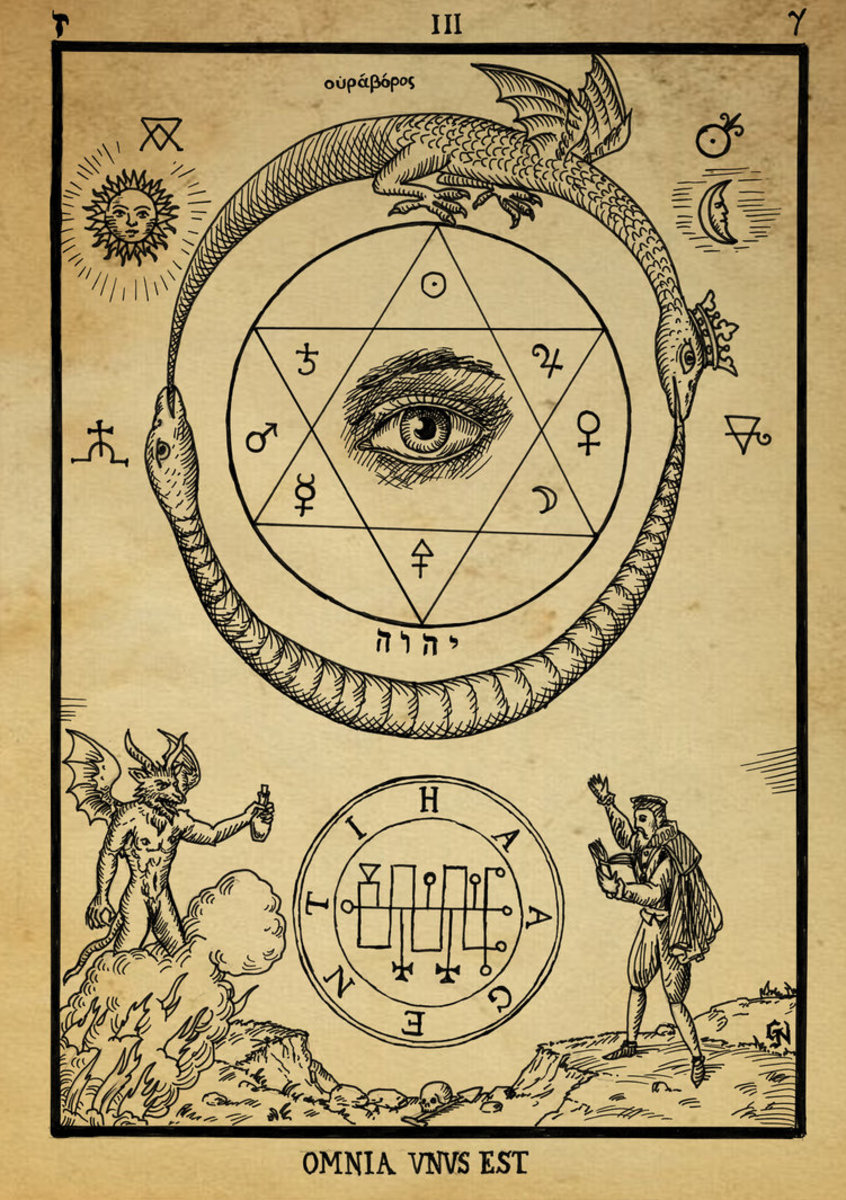

Planetary Metals
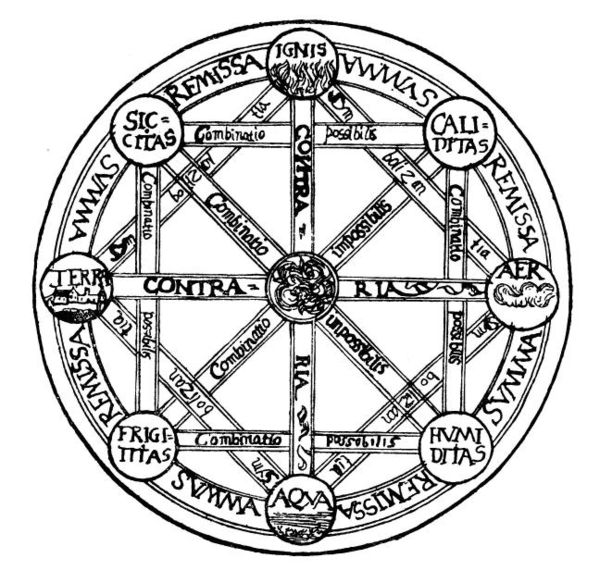
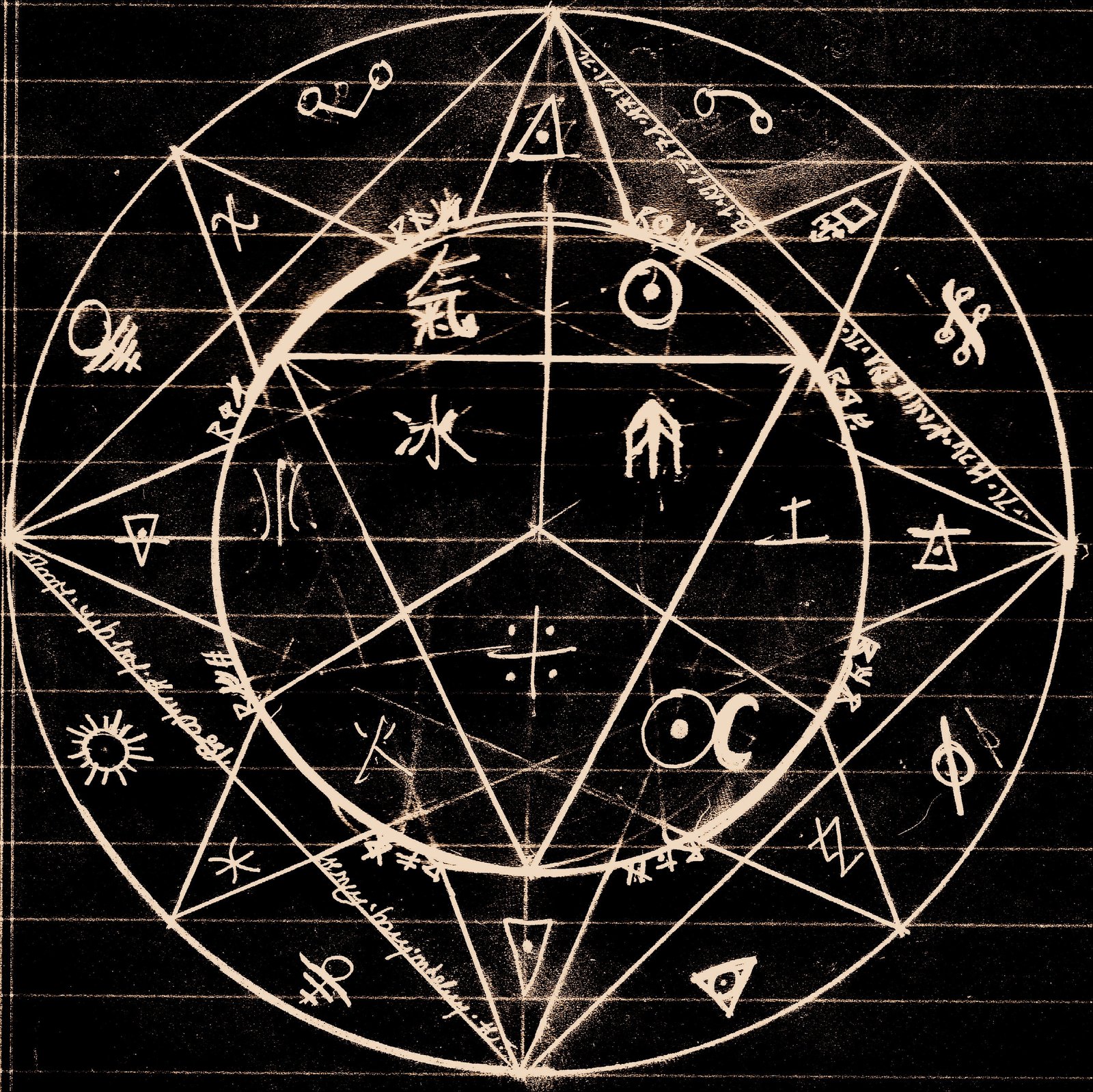
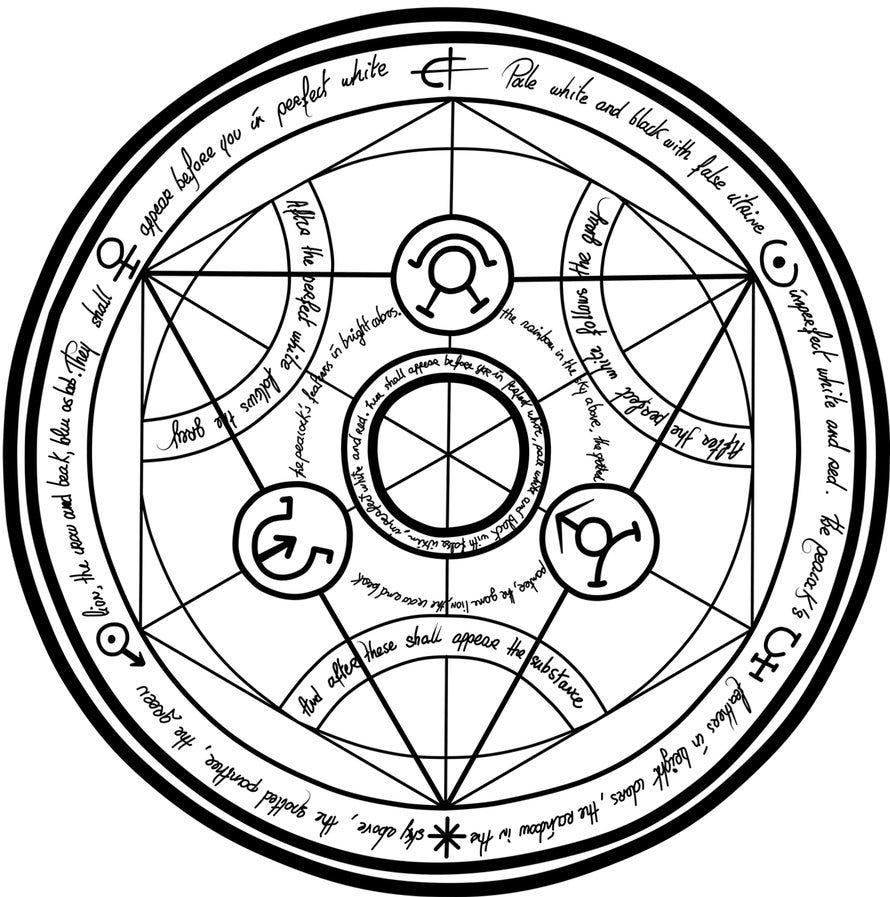
In Classical Europe, the seven known metals were intricately linked with the seven classical planets, forming a significant aspect of alchemical symbolism. While the specific associations fluctuated over time, certain metals remained consistently aligned with celestial bodies.
For instance, gold, silver, and lead were traditionally linked with the Sun, Moon, and Saturn, respectively, though variations occurred, such as bronze or electrum sometimes substituting for mercury, or copper occasionally representing Mars instead of iron.
These associations, established since the 7th century and solidified by the 15th, began to shift with the discovery of new metals like antimony, bismuth, and zinc in the 16th century.
Alchemists typically referred to metals using their planetary names, such as “Saturn” for lead or “Mars” for iron. Even into the 17th century, compounds of tin, iron, and silver retained their planetary attributions, known as “jovial,” “martial,” and “lunar,” respectively.
This tradition persists in modern chemistry, evident in the use of the planetary name “mercury” rather than the common term “quicksilver.” Some archaic terms, like “lunar caustic” for silver nitrate and “saturnism” for lead poisoning, also reflect this historical connection.
The correspondences between metals and planets were as follows:
-Lead, associated with Saturn ♄
– Tin, associated with Jupiter ♃
– Iron, associated with Mars 
– Gold, associated with the Sun ☉ 🜚 ☼
– Copper, associated with Venus
– Quicksilver, associated with Mercury ☿
– Silver, associated with the Moon ☽ or ☾ ( or ) [also 🜛 in Newton]
Alchemical Processes
Alchemical processes were often described as a sequence of chemical operations, with some interpretations numbering them at twelve. In such cases, each operation could be linked to one of the Zodiac signs, serving as a form of coded communication. A notable example of this symbolism is found in Pernety’s Dictionnaire mytho-hermétique (1758), as follows:
– Calcination (Aries ) ♈︎
– Congelation (Taurus ) ♉︎
– Fixation (Gemini ) ♊︎
– Solution (Cancer ) ♋︎
– Digestion (Leo ) ♌︎
– Distillation (Virgo ) ♍︎
– Sublimation (Libra ) ♎︎
– Separation (Scorpio ) ♏︎
– Ceration (Sagittarius ) ♐︎
– Fermentation (Capricorn ) ♑︎ (also known as Putrefaction)
– Multiplication (Aquarius ) ♒︎
– Projection (Pisces ) ♓︎
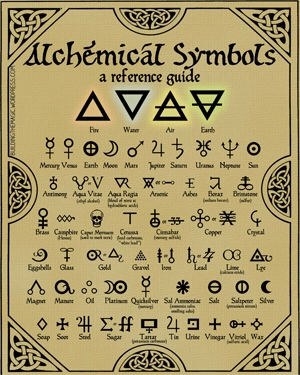
Key Alchemy Symbols and Their Meanings
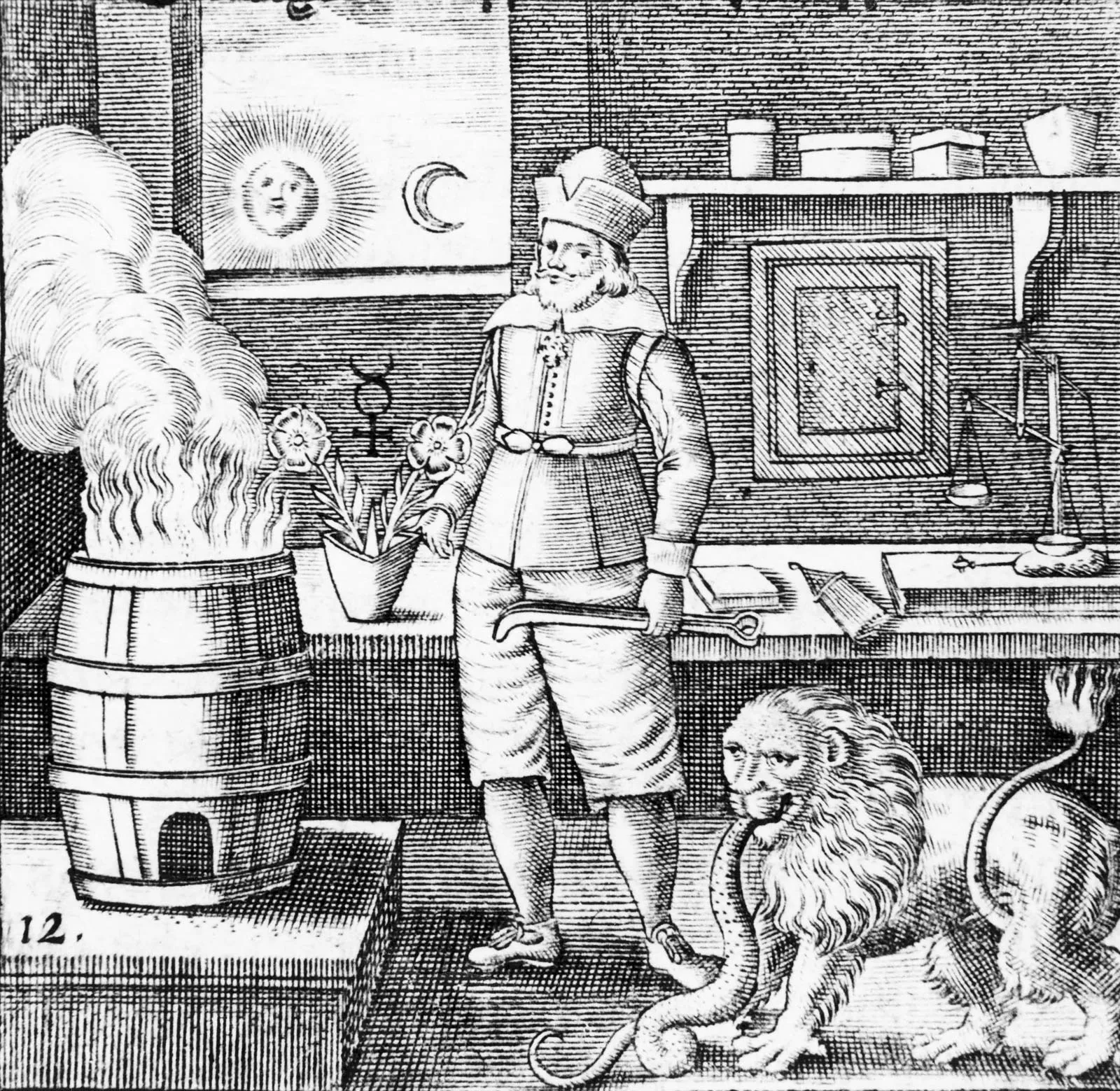
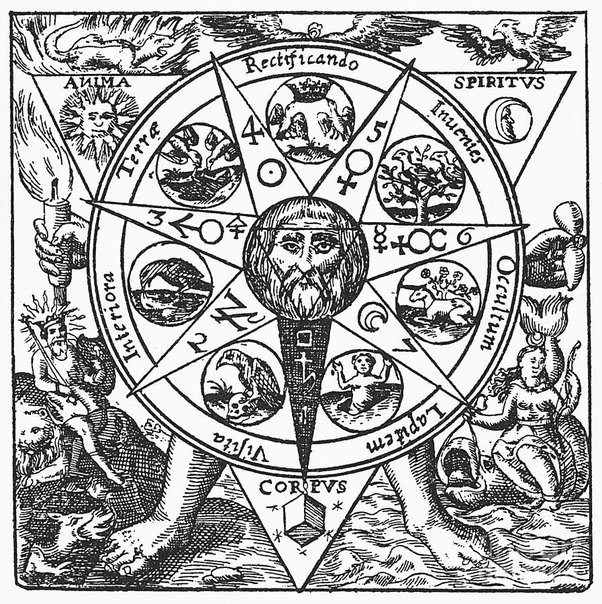
Central to the intricate tapestry of alchemical philosophy are key symbols that have transcended time and culture.
Among these, the enigmatic Philosopher’s Stone reigns as a symbol imbued with immense significance.
Often depicted as a legendary substance capable of transmuting base metals into gold, the Philosopher’s Stone represents not only material transformation but also spiritual enlightenment and the ultimate quest for knowledge and immortality.
This symbol has inspired alchemists and seekers of wisdom for centuries, symbolizing the eternal pursuit of perfection in all aspects of life.
Another prominent alchemical emblem is the Caduceus, a motif intertwined with healing, duality, and symbols used in alchemical traditions.
Originating from ancient Greece where it was associated with Hermes, messenger of the gods, this symbol consists of two serpents entwined around a staff or rod.
The Caduceus has evolved to represent various concepts such as balance, harmony between opposites, and the integration of conflicting forces.
In modern times, it has become synonymous with medicine and healing practices, adorning many medical institutions globally as a sign of protection, health, and well-being.
Three Primes
Paracelsus (1493–1541) proposed the concept of the three primes, or tria prima, which are the fundamental components immediately composing material substances: salt (body), sulfur (soul), and mercury (spirit), showcasing early chemical thought.
Sulfur, representing the soul and the principle of combustibility (🜍)
Mercury, symbolising spirit and the principle of fusibility and volatility (☿)
Salt, embodying the body and the principle of non-combustibility and non-volatility (🜔)

Four Classical Elements
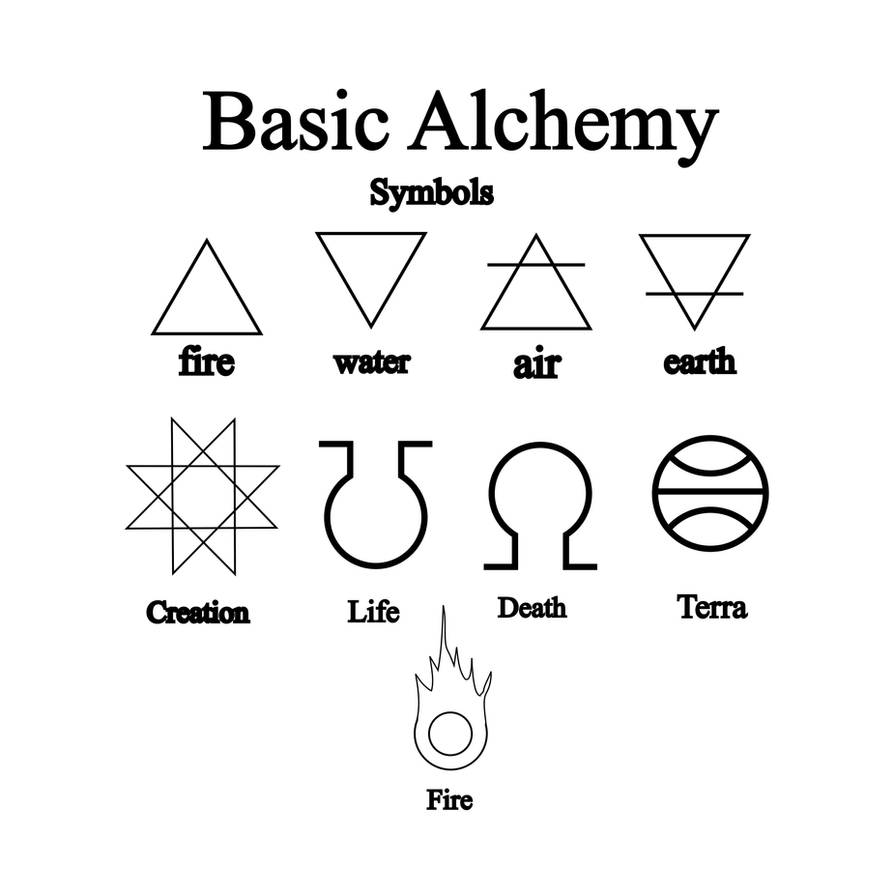
Western alchemy employs the four classical elements, each represented by specific symbols, forming a foundational chart in understanding how these elements interact in alchemical processes.
Air 🜁
Fire 🜂
Water 🜄
Earth 🜃, Representing one of the four classical elements in Western alchemy, symbolizes the solid state of matter in the chemical processes of transformation.
Philosopher’s Stone
The creation of the Philosopher’s Stone involved a meticulously structured twelve-step process, where each scientific procedure was named after and governed by a Zodiac sign.
The Alchemical Magnum Opus encompasses numerous transformations, transitioning substances from solids to vapors, vapors to solids, solids to liquids, and finally, liquids to solids.
Although the magnum opus lacked a specific sequence, alchemists endeavored to employ it in their pursuit of the mystical Philosopher’s Stone.
Initially rooted in the revival of ancient wisdom, the quest for the Philosopher’s Stone eventually transformed into an alchemical journey.
This transformative process, though often veiled in mystery or perceived as magical, lays the groundwork for modern chemistry.
Alchemy, with its blend of physical and spiritual elements, bridged the gap between the material and the metaphysical, refusing to segregate the realms of mind and spirit.
Amidst a significant period of scientific advancement, particularly in the 18th century, alchemy facilitated the transition from faith-based explanations to scientific exploration of existential questions.
Embedded within its symbols, processes, and meanings, alchemy presents a profound connection to a higher purpose, urging individuals to seek alignment with it in their lives, especially through the lens of alchemy symbols and their meanings.

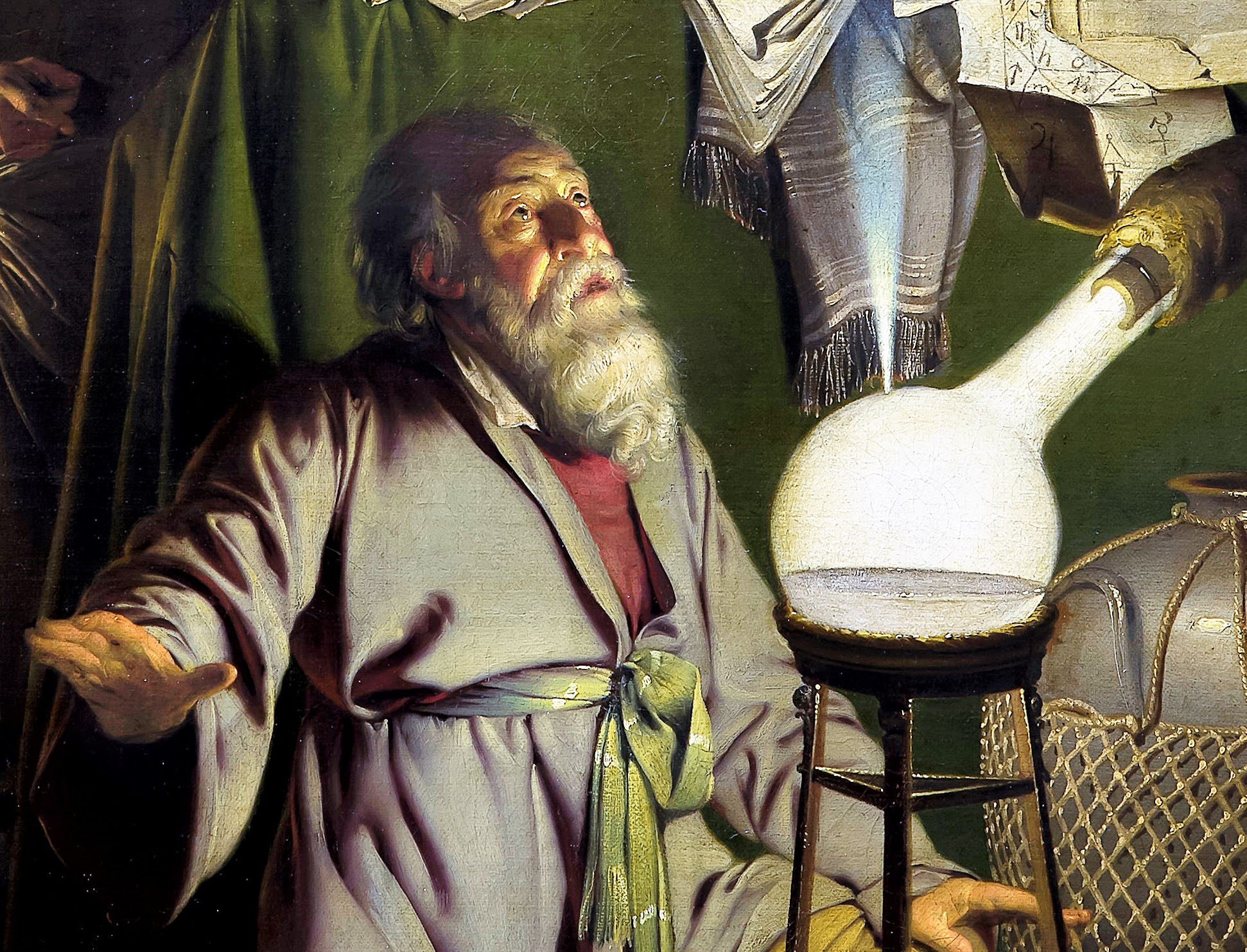
Mystical Creatures

The Ouroboros, often depicted as a serpent or dragon eating its own tail, embodies the cyclical nature of existence—birth, death, and rebirth—a fundamental concept in alchemy.
This ancient symbol illustrates eternal renewal and infinity while underscoring the interconnectedness of all things.
The Ouroboros signifies the perpetual evolution of life’s processes and encourages introspection on one’s personal journey towards self-realization and transformation.
Through its representation in various cultures spanning Egyptian mythology to Norse cosmology, this potent symbol continues to captivate minds seeking deeper philosophical insights into existence.
Influencing cultural beliefs and practices throughout history, these key alchemical symbols serve as gateways to profound contemplation on life’s mysteries and humanity’s timeless quest for meaning.
Their enduring presence in art, literature, and esoteric traditions attests to their powerful resonance and enduring appeal across civilizations—a testament to how symbols can transcend mere imagery to become vessels for profound truths waiting to be unraveled by those willing to delve into their mystique.
The Role of Alchemical Symbols in Modern Culture
In contemporary society, alchemical symbols continue to hold a powerful allure, captivating audiences with their enigmatic appeal and profound historical significance.
The resurgence of interest in alchemy and occult practices, enriched by a deeper understanding of alchemy symbols and their meanings, has permeated popular culture, providing fertile ground for the exploration and reinterpretation of these ancient symbols.
One prominent example of this revival is the adaptation of alchemical symbolism in the realm of art, where artists channel the mystical essence of these symbols to create thought-provoking pieces that bridge the gap between past and present.
Literature also serves as a medium through which alchemical symbols find renewed relevance in modern culture.
Authors often imbue their works with esoteric imagery derived from alchemical traditions, adding layers of symbolism that enrich readers’ interpretations and deepen their engagement with the text.
From subtle references to overt allegories, these symbols act as conduits for conveying complex themes and ideas that resonate across time periods.
Moreover, the realm of fashion has not been immune to the magnetic pull of alchemical symbols, with designers incorporating arcane motifs into their collections to evoke a sense of mystery and intrigue.
Runways have witnessed garments adorned with imagery reminiscent of ancient alchemy, merging historical lore with contemporary aesthetics to offer fashion enthusiasts a glimpse into a world where symbolism transcends mere ornamentation.
This fusion of past and present through the visual language of alchemical symbols underscores their enduring relevance as conduits for storytelling and self-expression in today’s ever-evolving cultural landscape.
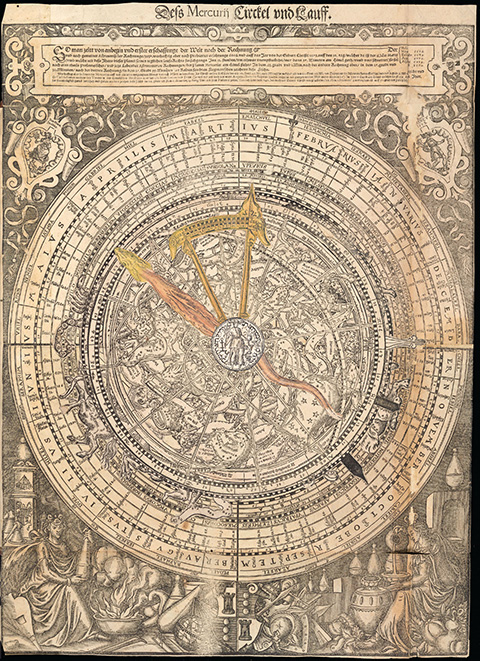
Decoding Alchemical Symbols: Unveiling Hidden Messages
Alchemical symbols, with their intricate designs and complex symbolism, often hide deeper meanings waiting to be deciphered.
The process of decoding these symbols involves unraveling hidden messages that have been ingeniously woven into alchemical diagrams and illustrations throughout history.
These encrypted messages serve as keys to unlocking the wisdom and esoteric knowledge embedded in ancient texts and manuscripts.
By delving into the layers of meaning behind these symbols, researchers and enthusiasts can uncover profound insights into the mysteries of alchemy.
Intricate alchemical texts and manuscripts are treasure troves of allegorical elements that offer a glimpse into the philosophical underpinnings of this mystical practice.
Symbolism plays a crucial role in conveying profound truths beyond the literal interpretation of words.
Through the interpretation of allegorical elements found within these texts, readers can delve into the realms of metaphysical concepts and spiritual transformation encoded within the symbolic language of alchemy.
Unraveling these allegorical elements not only enriches our understanding of historical practices but also provides valuable insights into how ancient practitioners viewed the world around them through a lens tinted with mysticism.
To truly appreciate the depth and complexity of alchemical symbols, it is essential to examine case studies that illuminate how deciphering these hidden messages can offer new perspectives on history and symbolism.
By analysing specific examples where hidden meanings have been uncovered from seemingly cryptic symbols, we gain a profound appreciation for the ingenuity and foresight of alchemists past.
These case studies serve as poignant reminders that beneath the surface simplicity lies a wealth of knowledge waiting to be unearthed by those willing to embark on the journey of decoding alchemical symbols.

Interpreting Alchemical Symbols for Personal Growth
Alchemical symbols, with their rich tapestry of meanings and metaphors, have long been a source of inspiration for personal growth and spiritual exploration.
By delving into the esoteric realm of alchemy, individuals can unlock profound insights that can lead to inner transformation.
The allegorical nature of alchemical symbolism lends itself well to introspection and self-discovery, allowing individuals to connect with universal truths on a deeper level.
One way in which individuals can interpret alchemical symbols for personal growth is by viewing them as reflections of inner processes.
For example, the concept of transmutation in alchemy – turning base metals into gold – can be seen as symbolic of transforming one’s own flaws and imperfections into qualities of higher value and purity.
By meditating on symbols like the Philosopher’s Stone, practitioners may uncover hidden aspects of themselves and work towards self-improvement.
Guidance on using alchemical symbols as tools for self-discovery often involves practices such as dream analysis, meditation, or creative visualisation.
These methods allow individuals to engage with the symbolic language of alchemy in a personal and meaningful way, forging connections between external symbols and internal psyche.
Through this process, individuals can unearth subconscious beliefs, unresolved emotions, or untapped potential buried deep within their unconscious minds.
Real-life testimonials from those who have embarked on journeys of self-exploration through studying alchemy testify to the transformative power of these ancient symbols.
Stories abound of individuals who have experienced profound shifts in consciousness, gained clarity on life’s purpose, or discovered newfound resilience through interpreting alchemical symbolism in their personal lives.
These accounts serve as powerful reminders of the enduring relevance and impact that alchemical symbols hold in guiding individuals towards self-realization and growth.
The Enduring Legacy of Alchemical Symbols
In conclusion, the enigmatic realm of alchemical symbols has left an indelible mark across diverse epochs and cultures. From its ancient origins to modern interpretations, these mystical symbols, with a detailed list available on sources like Wikipedia, continue to captivate history enthusiasts, occult aficionados, and symbolism seekers alike.
Through the ages, alchemical symbols have transcended boundaries of language and time, embodying universal truths that resonate with individuals seeking personal growth and enlightenment.
Despite the passage of centuries, the enduring legacy of alchemical symbols endures as a testament to humanity’s quest for knowledge, transformation, and spiritual evolution.
The timeless appeal and universal relevance of these symbols serve as beacons guiding us through the labyrinth of existence and offering glimpses into a world where the physical and metaphysical converge.
As we unravel the intricate tapestry woven by alchemy’s symbols, we discover not only hidden messages from the past but also eternal truths that illuminate our path towards self-discovery and enlightenment.
Just as alchemists sought to transmute base metals into gold, so too can we aspire to transform our own lives through decoding the mysteries encoded within these esoteric symbols.
